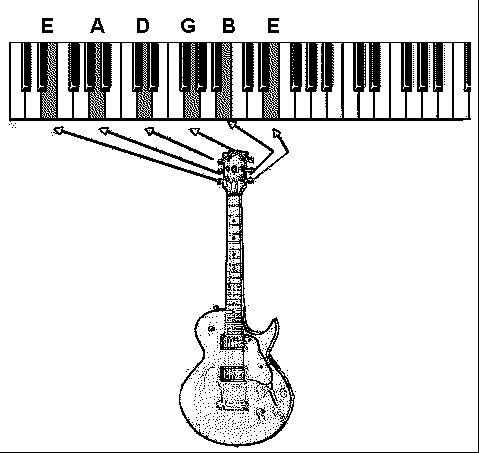Guitar Tuning
Standard Tuning
Starting low to high
E A D G B E
All standard 6 string guitars are tuned the same.
- Bottom E String or 6th String: 82.41 Hz
- A String or 5th String: 110.00 Hz
- D String or 4th String: 146.83 Hz
- G String or 3rd String: 196.00 Hz
- B String or 2nd String: 246.94 Hz
- High E String or 1st String: 329.63 Hz
Over 95% of all guitar music is in standard tuning or a dropped down version of it. Some guitar players tune all the strings down one half step. Always tune up. This means that you increase the tension of the string until it reaches the desired tone. If you go too far loosen the string tension and tune up again. This is much more accurate than tuning down and increases the chances of the string staying in tune.
Each string is 5 frets apart except the B string which is only 4 frets higher than the G string.
The best way to tune your electric guitar is using a electronic tuner. Most good Guitar Amps have a built in tuner function. Another way to tune a guitar is using computer software. An acoustic guitar can be tuned with an electronic tuner also, if that tuner has a microphone. If you are good enough you can tune by ear, harmonics, or use a comparison to a tuning fork set or even a piano.
Guitar String Notes in Standard Tuning
- '#' means 'sharp' and 'b' means 'flat'
- numbers represent the frets starting from 0 with no finger on the string (an open string) and 1 being the first fret closest to the tuning pegs.


